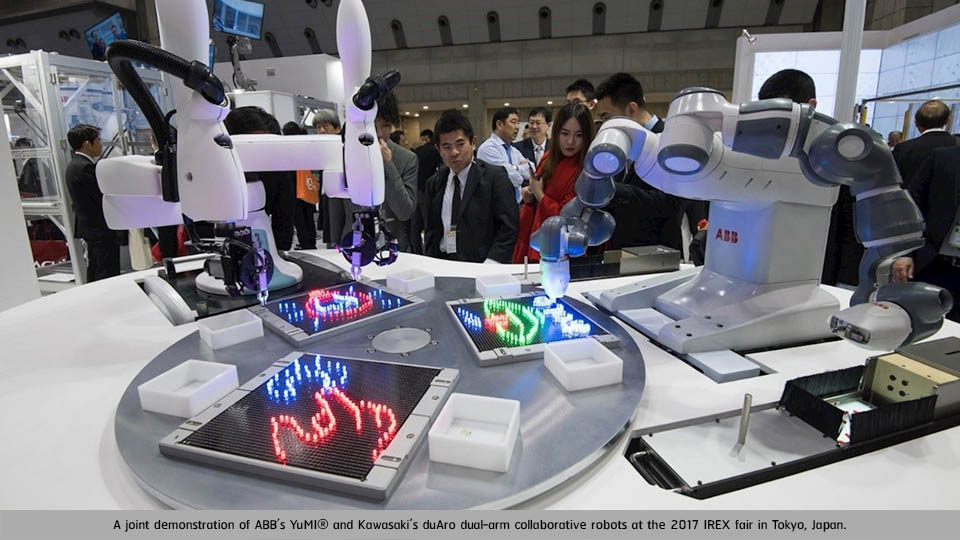
ABB and Kawasaki create world’s first common interface for collaborative robots
ABB and Kawasaki Heavy Industries, both global leading players in industrial automation and robotics, are showcasing the world’s first common collaborative robot operating interface at automatica in Munich, Germany from June 19-22, 2018.
Demand for collaborative robots has outpaced the rapidly-growing industrial robot market, as easier-to-use robots open doors to new users. The fact that collaborative robots can be programmed and operated by people without specialized training helps small and medium enterprises, in particular, to leapfrog traditionally longer industrial robot learning curves.
Collaborative robots (cobots) that can be operated by nearly any user can help offset labor shortages. Their flexibility to work nearly anywhere in a factory without safety barriers also makes them ideal for meeting sudden and unexpected demand peaks.
“The new state-of-the-art, industry-standard operating interface will accelerate the already rapid growth we see in collaborative robots,” said Per Vegard Nerseth, Managing Director of Robotics for ABB. “It will give many new manufacturers flexibility and scalability, while providing more interesting jobs for the world’s vital industrial workforce.”
The interface is a result of the collaboration between ABB and Kawasaki announced in November of 2017, designed to share knowledge and promote the benefits of collaborative automation, in particular dual-arm collaborative robots. It includes a simplified human–robot interface with intuitive, smartphone-like navigation and icons.
Yasuhiko Hashimoto, Managing Executive Officer and President of the Precision Machinery and Robot Company, Kawasaki Heavy Industries, Ltd., said: “We are proud to take this first big step together with ABB and it is entirely appropriate that we usher in a new age of collaboration automation with a collaborative approach. Collaborative robots will make a large contribution to society in making manufacturing more flexible and efficient and in keeping our factories productive with an increasingly scarcer workforce.”
In addition to continued development of the operating interface, the collaboration also focuses on other topics such as common safety standards. Traditional industrial safety standards are based on years of practice, supported by very specific parameters. The goal for collaborative automation is to develop safety standards which ensure worker safety, but also allow for entirely new ways of working together without unduly restricting collaborative robots’ many benefits.

